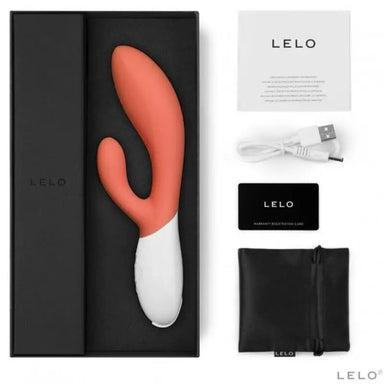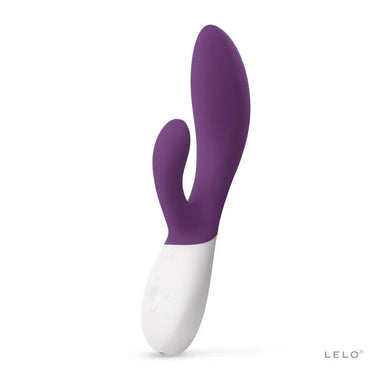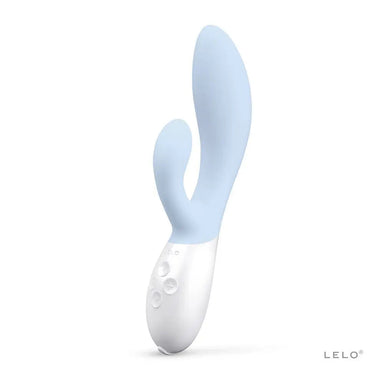Ultra-Thin Condoms Guide
Looking for the best condoms to offer you intense pleasure? Read through this article to understand more about the ultra-thin condoms.
According to Frankiewicz, Połom & Matuszewski (2018), a condom is a sheath-shaped barrier used during intercourse to reduce the probability of sexually transmitted infections or pregnancy. Besides these, they are known for providing a new wave of eroticism into your sex life. Most people use condoms for vaginal sex, but they can also be used in foreplay, oral and anal sex. They are available in different types and materials. Choosing the best type and knowing how to use it, especially with new beginners is always challenging. However, this article weeds out everything you need to know before getting into the world of condoms.
What are Condoms?
Purdy (2011) states that condoms are a form of contraception that creates a barrier to protect against STIs. They are tube-like shaped worn over the erect penis when the time for penetration is right. The products are compatible with different sex toys to give a new world of sensation in your sex life. Moreover, Szucs et al. (2020) are convenient items for effective birth control. They are made from a wide range of different materials including, natural rubber, polyurethane, nitrile, and lambskin to provide different sensations during sex. Some have lubricants that enhance more sensations and smooth penetration. Lubrication is very important as explained by Angel (2022). Moreover, Wilson et al. (2017) explains that lubricants are used to wet the genitals during procreative sex. While they work well with several people, some are allergic to certain materials.
Why Use Ultra-Thin Condoms
Some people believe that condoms make sex less pleasure. Ultra-thin condoms are popular among people who would like to enjoy the benefits of having protected sex without compromising completely on the skin-to-skin sensations they would have had if they weren’t using the condom.
Types of Ultra-thin Condoms
Ultra-thin condoms are gaining popularity. Below are the different types you are likely to find in the market;
Lubricated
These types of ultra-thin condoms come laced with lubrication to prevent friction during sex. The lube prevents friction hence the condom cannot break. You can turn your –non- lubricated condom into a lubricated condom by filling it with lube. Note that you should not use oil-based lube to fill the condom because you may cause it to tear. The lube that you should use to fill your condom is water-based lube.
Spermicide Condoms
Spermicide condoms come laced with a chemical that is meant to kill sperms to prevent pregnancy. You could still add some more spermicide if you want the condom to be more effective.
Latex Condoms
Latex condoms are the most common condoms because they are easy and cheap to manufacture. When using latex remember to never use oil oil-based products because oil and latex do not mix. According to Philpott, Knerr & Boydell (2006), oil will break the latex and make the condom seem like it isn’t effective enough. Some people are also allergic to latex. According to Nucera et al. (2020), signs of latex allergy include itchiness and rashes and some women will report persistent yeast infections because their bodies cannot cope with the latex.
Tingling Condoms
Some condoms come with a tingling sensation during sex. Some people find that sensation pleasurable. Others are not turned on by the tingling sensation while others do not notice it.
Flavored Condoms
Flavored condoms add some spice in the bedroom. It is the preferred condom for people who hate the smell of latex. The flavored condoms are as effective as other condoms except the fact that they are laced with tasty coating.
Points to Consider When Choosing Condoms
Check the Manufacturer and Expiry Date
Using items, especially those that come in direct contact with the body after the expiry date can be dangerous. All condoms have manufacturing and expiry dates stamped on the wrappers or their packages. Ensure you read the labels carefully to avoid using expired condoms which may tear or break easily. If you cannot identify the date, use the quality tasting criteria. For instance, remove the condom and pull it to see if it breaks easily.
Look for Defects
Defects, such as odor, bristle, sickness, and discoloration indicate expiration or weak condom which may break easily. If you identify any of these on your condom, toss it and get a new one with all qualities.
Check the Material
Condoms are made from different materials, such as natural rubber, polyurethane, nitrile, and lambskin. Thus, getting the best one that suits your purpose, especially for beginners, requires wise research. There are important things to consider when choosing quality materials like friction resistance. Choose one that will withstand heat and friction even in hard sex to avoid bursting.
Choose the Best Size
Buying the right size helps you to prevent increased risks of condom errors like breaking. Always measure your penis length and width using a tape measure any time you want to buy a condom.
Check on the Signs of Friction
Check the signs of friction by identifying the quality of the package. For instance, if it is rubbed off, probably, your condom is worn down. Therefore, dispose of it because it is most likely to tear or break during sex.
Consider Your Skin Sensitivity
Buy condoms that work well with your skin to avoid stressful sex. If you are a beginner, try different choices and see what works better for you before engaging in full sex.
How to Use the Condoms
- Apply water-based lubricant to the outside of the condom before penetrating to prevent friction, enhance more pleasure, and stay protected.
- Open the wrapper gently by using clean hands. Avoid the use of teeth or sharp objects like razors or scissors because they may tear them.
- Check any damage to avoid direct body contact and enhance intense pleasure during sex.
- If you are sure that the condom is valid, wear it by holding its rim in one hand and pinching the tip with the thumb and forefinger. Roll it down the penis with the rim remaining outside.
- While putting on, the rim should roll smoothly, but if it does not, dispose and get a new one because it might be having precum.
- After using, pull the condom off while you are still erect by holding it in place with one hand to prevent semen from flowing into your lover’s body.

Safety Tips of Using Condoms
- Do not take condoms given on offer because they may be expired or worn down. Therefore, get into your pocket and buy safe condoms to enjoy every bit of penetration.
- Buy from a trusted shop. Most people sell outdated products, for instance, the expiry date can be forged and extended to confuse you. For this reason, buy condoms from a trusted shop, or buy in bulk and stock.
- Avoid keeping condoms in your wallets, cars, purse, or bathrooms, because this way you are exposing them to heat that damage their features. Consider storing them in a cool and dry place to avoid damaging them.
- Discuss with your partner before using condoms. While condoms are used to protect you from STIs and enhance more sensations, your partner may not be into it. Therefore, ensure you communicate with your lover and hear the feedback before buying them. This will enhance corporate pleasure which strengthens the bond.
- After use, dispose of the condom correctly; do not throw anyhow where the children can easily access them, and prevent sliding over them and falling. You can throw them into a latrine or burn them in the pit.
Frequently Asked Questions about Ultra-thin Condoms
Do Ultra-thin Condoms Break Easily?
An Ultra-thin condom may feel thinner than other condoms but its ability to break or not depends on how it is used. If it is used properly, the ultra-condom will not only be pleasurable but also protect the users from diseases and unwanted pregnancy. All kinds of condoms are likely to break if not worn and used properly, and ultra-thin condoms are no exception. The same guidelines that are used for ordinary condoms are the same ones that you need to follow when using ultra-thin condoms. You may also use lubrication to minimize the friction and reduce the chances of the condom breaking. However, if you decide to use lube on the condoms it is best that you avoid oil-based lube. Simbayi & Kalichman (2007) explains that oil-based lube will pull and tear the condom. The best lube to use with ultra-thin condoms is water-based lube. The following are the tips you need to follow for proper condom use to avoid breaking incidences;
- When you want to open the condom, wrapper do not use your teeth.
- If the condom is expired do not use it.
- Use a new condom for every new erection.
- Leave some space at the tip of the condom for the ejaculation.
Do Ultra-thin Condoms Make a Difference?
Ppeople have different opinions about ultra-thin condoms. Some people may feel that it makes a difference while others think otherwise. However, ultra-thin condoms should feel as if it were skin to skin sex because the condom is very thin. They may be a great condom for people with erectile dysfunction because they need the penis to be sensitive for them to erect which might not be possible with other condoms.
It is important that people adopt safe sex practices to avoid sexual illnesses. However condoms are still not poplar because some people complain that sex is less pleasurable with and if people are willing to use ultra-thin condoms rather than do away with sex all together that will be great enough.
Can I Use Sex Lubes with Ultra-thin Condom?
Sex lubes are important during sex because they reduce friction and that means that you will not be thinking about the condoms breaking while you are having sex. They also allow the partners to enjoy painless sex. Some lubricants allow the man to enjoy sex and not have premature ejaculation. The role of lubricants during sex does not change with ultra-thin condoms. You can use them like you do with the ordinary condoms. While using lube is okay, you should not use oil-based lubes with condoms. Oil-based lube will pull and tear the condom.
How Ultra-thin Condoms are Different from Other Condoms
The only aspect that make ultra-thin condoms different from other condoms is that they are very thin and for that reason they are designed differently so that the user can wear them easily. The users claim to feel more sensations and closeness while having sex with their partners than when they do with ordinary condoms. Moreover, the ultra-thin condoms are like any other condom in terms of use and effectiveness. The advantages and the shortfalls affecting other types of condoms affects ultra-thin condoms.
What are the Risks of Ultra-thin Condoms?
Ultra-thin condoms are like any other condom. The only risks that are associated with condoms is latex allergy and numbness during sex by some men. The other risks that condoms are meant to prevent, like unwanted pregnancies and sexual infections and HIV can only happen if the condom is not used properly. To avoid those risks the user should avoid the following mistakes in condom use;
- Not leaving some space at the tip for the ejaculation.
- Wearing the condom inside out.
- Using the teeth to open the condom wrapper.
- Withdrawing incorrectly, letting the semen spill
Conclusion
Condoms are designed to protect you against STDs and unwanted pregnancy. They are also known for providing intense sensations during sex. Even though they are mostly used for vaginal sex, the products can also be part of foreplay, oral and anal sex. They are made from a wide range of materials, such as nitrile, natural rubber, polyurethane, nitrile, and lambskin. While using them, you can apply lubricants, such as water-based type to the outside of the condom before penetrating to prevent friction and enhance more pleasure. Also, after the session, pull the condom off while you are still erect by holding it in place with one hand to prevent semen from flowing into your lover's body. Ensure that you store them correctly to avoid heat exposure.
References
Angel, K. (2022). Tomorrow sex will be good again: Women and desire in the age of consent. Verso Books.
Frankiewicz, M., Połom, W., & Matuszewski, M. (2018). Can the evolution of male contraception lead to a revolution? Review of the current state of knowledge. Central European Journal of Urology, 71(1), 108.
Nucera, E., Aruanno, A., Rizzi, A., & Centrone, M. (2020). Latex allergy: current status and future perspectives. Journal of Asthma and Allergy, 13, 385.
Philpott, A., Knerr, W., & Boydell, V. (2006). Pleasure and prevention: when good sex is safer sex. Reproductive health matters, 14(28), 23-31.
Purdy, C. H. (2011). Using the Internet and social media to promote condom use in Turkey. Reproductive health matters, 19(37), 157-165.
Simbayi, L. C., & Kalichman, S. C. (2007). Condom failure in South Africa. S Afr Med J, 97(7), 476.
Szucs, L. E., Lowry, R., Fasula, A. M., Pampati, S., Copen, C. E., Hussaini, K. S., ... & Steiner, R. J. (2020). Condom and contraceptive use among sexually active high school students—youth risk behavior survey, United States, 2019. MMWR supplements, 69(1), 11.
Wilson, S. L., Adam, J. K., & Krishna, S. B. N. (2017). Effects of vaginal lubricants on in-vitro progressive spermatozoa motility. African Journal of Reproductive Health, 21(3), 96-101.




































